
Smart Connectivity Redefining Consumer Behavior

Today’s consumers are driven by new demands and expectations for swiftness, connectivity, and frictionless experiences on every channel. They no longer see offline and online experiences as distinct—all they care about is what they need to get done. As pandemic restrictions begin to ease, customers are consciously using connected devices to enhance their daily lives by striking a balance between their virtual and physical worlds. An array of innovations across the technology landscape have converged to make smart, connected products technically and economically feasible.
Who are Connected Consumers?
Connected consumers are digital natives who have access to information and are connected to people and companies via internet-enabled devices, social networks, appliances, and sharing tools. A constantly connected consumer regards expediency, consistency, and personalization higher than anything. They want access to their information in real time. Their lifestyle is data-driven and digitally enabled.
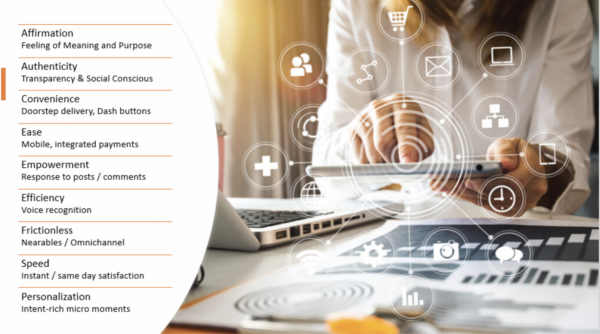
The True Emergence of Total Experience with the Advent of 5G
As the future of 5G increases the reliability and speed of connectivity, a rapid shift is expected in the way consumers engage with their products; from the proliferation of mobile app subscriptions to the ability of AI to sell cars instead of a sales rep.
To help build loyalty among consumers and employers alike and drive the business forward, it is imperative for the organizations to embrace “total experience.” Total experience (TX) is a business strategy that encompasses the complete company experience, from the employee to the customer and the end users. TX improves experiences at the intersection of multiple constituents to achieve a transformational business outcome. Enterprises must deliver TX with a human-centric approach that is beyond customer experience (CX); as it has the power to align interconnected but often disparate experiences.
Sub-components of total experience include:
- Multi-experience (MX) is the overall experience individuals have with your brand across different digital channels, on different devices, and using different interaction modalities, including touch, voice, and gesture
- User experience (UX) is the overall design, usability, and functionality of a specific product or service
- Customer experience (CX) is the sum of all interactions a customer has with a brand before, during, and after a product purchase or service engagement
- Employee experience (EX) is the sum of all interactions an employee has throughout their tenure with a company, from recruitment to retirement
5G could enable tools capable of gathering more granular consumer information. Imagine a future where IoT sensors are monitoring everything from how much milk is in the fridge to when a car pulls into a parking space. In turn, consumer identity graphs will grow more sophisticated—and more valuable to advertisers. The human-first approach not only helps companies provide liberating experiences with smart connectivity but also to bridge the skill gaps thereby helping companies with talent acquisition.
To combat tech fatigue and screen overload, technology companies, device makers, app developers, telcos, and other ecosystem players should optimize consumer devices and connectivity to help consumers enjoy better virtual experiences.
An Era of Ubiquitous Connectivity
Smart, connected products are shaking up traditional supplier relationships and redistributing bargaining power. These products often introduce new suppliers and providers of sensors, software, connectivity, embedded operating systems, data storage, and analytics, and other parts of the technology stack. A good example is the Open Automotive Alliance, in which GM, Honda, Audi and Hyundai joined forces to utilize Google’s Android OS for their vehicles.
A few factors that must be considered while embedding each feature in the product include:
- Response time
- Automation
- Network availability, reliability, and security
- Location of product use
- Nature of user interface
- Frequency of service or product upgrades
Smart, connected products with 5G and AI-enabled IoT systems open a spectrum of new business models like B2B2X where the customer benefits from the new service efficiencies to the product-as-a-service model, product sharing (Eg: Zipcar or Hubway), and performance-based hybrid models. From new forms of media and entertainment to smart manufacturing, robotics and logistics, transport, health and smart cities, each sector is experimenting with its own digital future.
Key Technology Enablers of the Connected Consumer Experience
Some highlights that impact the connected consumer experience include:
- Smarter Things – Smart consumer devices and products that are built to deliver personalized solutions and can operate autonomously, like connected home appliances
- TX helps brands better understand what their customers want and empower the employees to give the best service
- AI Engineering – The world is more predictive, and it combines machine learning, AI, and expert systems. An example of AI engineering is the robots that manufacture self-driving cars
- Cloud-native platforms are designed to take advantage of the distributed, resilient, and agile cloud computing model. They use technologies such as API, continuous integration (CI), and continuous delivery (CD) toolchains
- Composable approach enables enterprises to innovate and adapt applications rapidly and dynamically by breaking down modular components into smaller services called microservices or packaged business capabilities (PBCs). Thereby supporting on-demand capabilities, connected digital experiences and more digitization of older business models
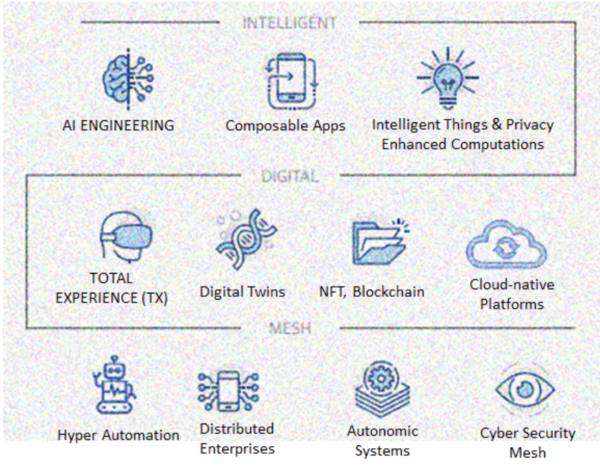
Connected Experiences Available on the Market
These examples demonstrate how leaders are leveraging connected experiences with an outside-in approach to understand the consumer needs and develop solutions that will be most effective for them.
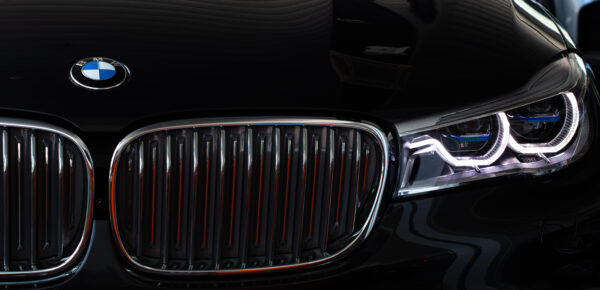 |
BMW E Ink
BMW iX Flow is a vehicle by the German manufacturer that swaps traditional exterior paint for E Ink technology. At the push of a button, you can personalize the car to suit your dress or your social media status. Aside from the considerable aesthetic boon, the color changes can help cut the amount of cooling and heating required, thus reducing battery drain. |
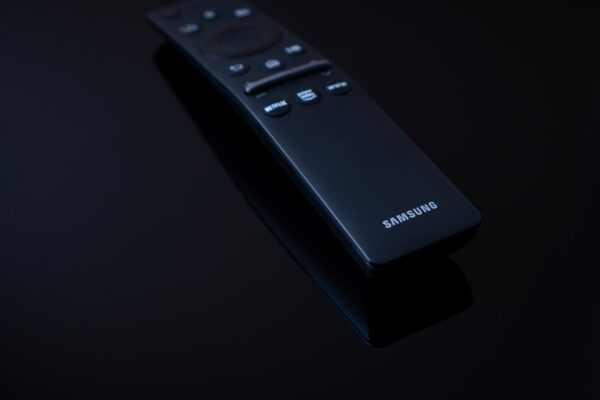 |
Samsung Eco Remote
Samsung has made a remote that never needs new batteries in the home entertainment category. The Eco Remote charges from both solar energy and the radio waves blasted out of your Wi-Fi router to stay juiced up indefinitely. With this, Samsung estimates it could avoid 99 million discarded batteries over seven years.
|
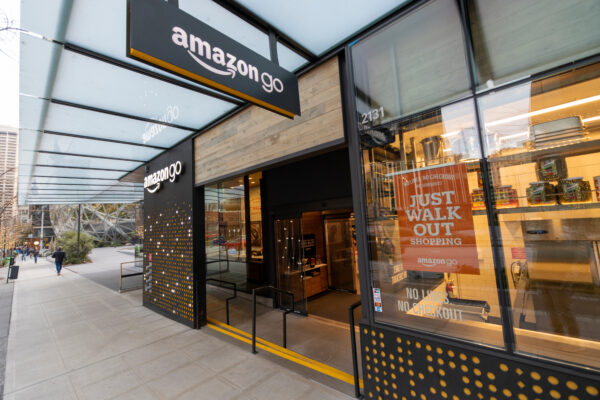
|
Amazon Go
Just-Walk-Out technology automatically detects when products are taken or returned and keeps track of them in a virtual cart thereby driving increased footfalls and instant checkouts. Integrating cloud-based voice services will further revolutionize the buying experience. |
 |
Samsung AI powered Shopping
Samsung’s AI powered fridge/freezer combo can scan what’s inside and let users know what items they’re short on, even making meal suggestions based on the ingredients they still have. Thereby enhancing your grocery experience. |
 |
Wisear Smart Earphones
The First Smart Earphones with neural-based controls that let listeners use their minds to change songs and execute other actions. The tech works using tiny electrodes that record brain and facial activity along with AI to transform signals into controls. This possibility could be extended to devices like VR headsets which could become even more immersive by skipping some controls. |
Deliver the Connected Consumer Experience with These 3 Guiding Principles
Offering your customers a connected and total experience can help them bridge the gap between their virtual world and reality. This will build your brand loyalty and future-proof your digital initiatives. Achieving this is made possible by 3 guiding principles:
- Identify the trusted partner
- Adopt humanized thinking and design approach
- Deliver frictionless experience with enabled prescript ability and personalized interactions at every touchpoint
We at Apexon, are enabling a human-first digital approach to business transformations and helping our customers to outperform their competition. At the core of our company is a spirit of innovation and gumption, a pride and perseverance to solve the toughest technical problems for our customers so that they can take full advantage of the awesome power of digital.
With the advent of key technology developments in 5G, AI, Internet of Things (IoT), digital twins, metaverse, and more, business and IT leaders across industry are poised to accelerate their digital transformation. With proven capabilities and vast experience, Apexon can shape your intelligent industry strategy and deepen customer engagement and loyalty.